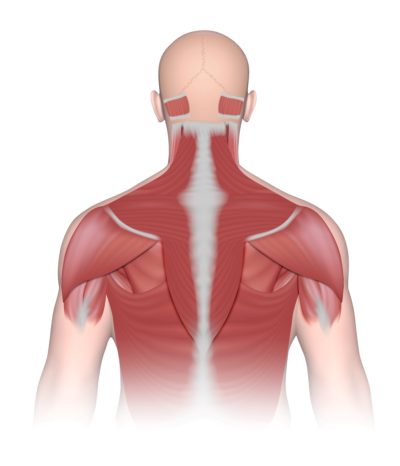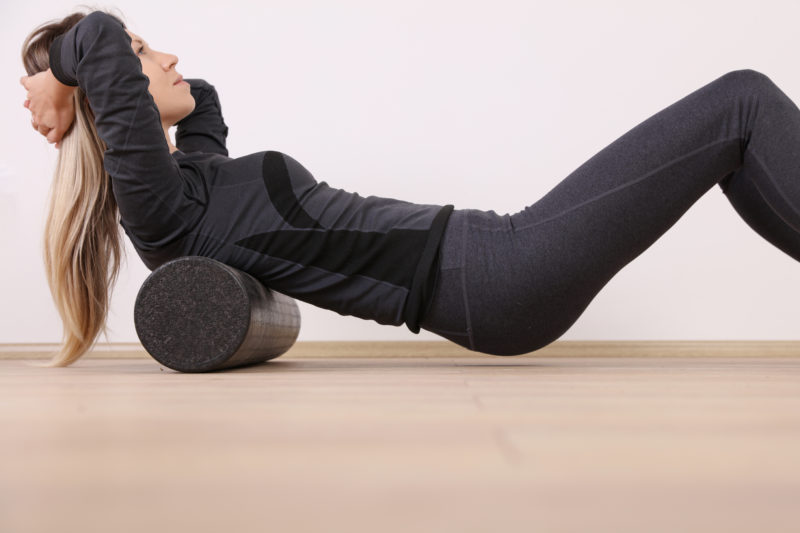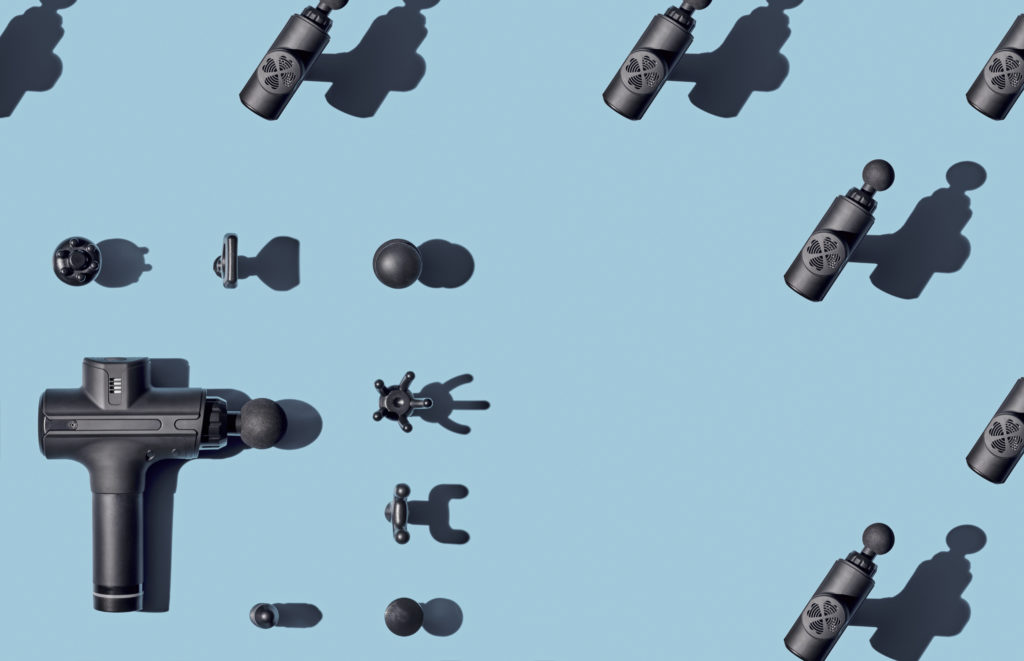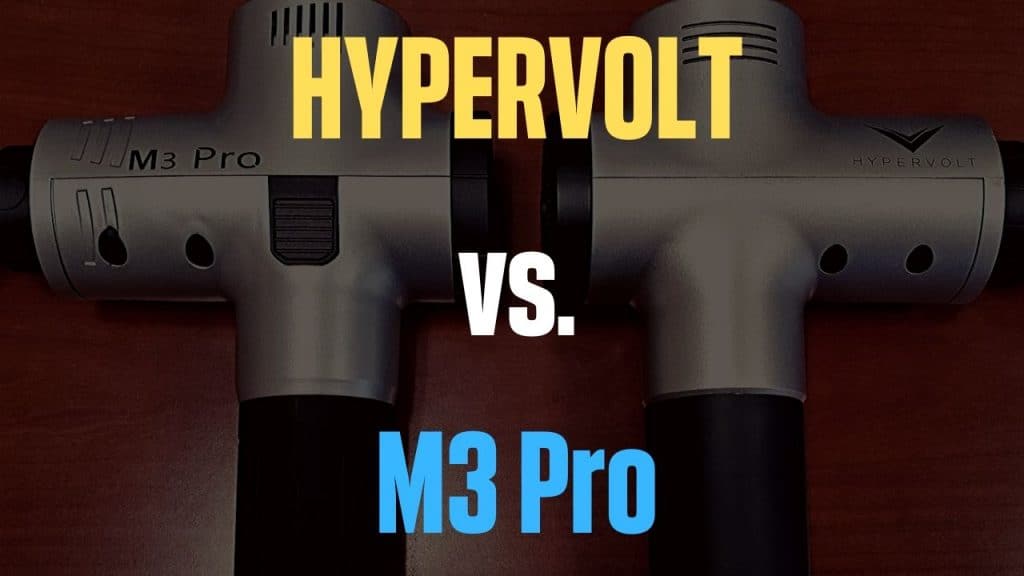Just about everyone has experienced back pain at one point or another. Whether you suffer from tension and knots or have a chronic back condition, you know that it’s not fun. Luckily, there are some things you can do to help loosen up those sore muscles and tight connective tissues by using the massage points on back.
Unless you’re a licensed massage therapist, however, it can be sort of difficult to gauge just how to go about massaging your own back. You know where the pain is located, and you may have even attempted some self-massage. But how do you know if you’re doing it right? Where are the massage points on back muscles?
Massage Points on Back Musculature: Where Should I Massage?

When you massage your back, you’ll obviously want to work in the area that is causing you the most discomfort. By focusing on tight spots, you’re able to remove any muscle knots or adhesions, release tension and provide pain relief.
By also expanding your massage to other areas of the back, you can help to prevent further problems by improving range of motion, loosening up your muscles and joints and encouraging good blood flow.
It’s very common to experience recurring knots in the same area; athletes often experience this after focusing on a particular muscle group as do those who spend long hours sitting. Muscle knots tend to form when a muscle is irritated by repetitive motion.
Massage points, also known as pressure points, are specific spots on the body where pressure can be applied. The practice of acupressure is an alternative therapy based upon principles of acupuncture and traditional Chinese medicine. By applying pressure to different points on the body, it is believed that the body’s circulatory, lymphatic and hormonal systems are boosted.
There are a number of massage points in the back muscles that run along the spine. While avoiding any pressure placed directly on the spine itself, you can massage on and around these muscles to get relief from muscle pain tension.
Which Direction Do I Massage In?
The direction that you massage a muscle has a significant impact on the massage outcome. Depending on your goal, you will begin at the origin or insertion of the muscle that you want to focus on. You can simply do some research to learn about where this location is for each muscle that you want to focus on.
- Warm-up: If you want to warm up or activate your muscles before a workout, move from the origin of the muscle toward the insertion of the muscle.
- Recovery: If you’re aiming for recovery or to relax the muscles in your back, you can begin at the insertion point and move toward the origin, or move across and around the muscle group.
How Can I Massage My Own Back?
The back is the trickiest spot on the body for a person to reach by themselves. People with good shoulder mobility should be able to reach their backs at different angles to tuck in a shirt, fasten a bra clasp or reach an itch. Even if your shoulders are in great shape, it’s pretty uncomfortable to try to massage your own back, and actually impossible in many spots.
Here are a number of ways to perform self-massage on the back:
Lacrosse or Tennis Ball
If you’ve been to physical therapy or massage therapy for any back-related issues, your therapist may have recommended you try this method. It’s a great tool for relieving tight muscles in the upper, mid, and lower back.
- Start by standing against a wall and placing the ball between the problem area and the wall.
- Begin moving your body up and down, side to side to find areas of tension. You’ll know when you’ve found one as they’re sensitive to the application of pressure.
- When you’ve found a knot or tender spot, apply firm pressure for about 10 seconds, either holding in place or making a circular motion. Move the ball slightly and make larger motions around the area. You can repeat this if the tension persists.
- Once you feel the tension is relieved, move on to a new spot.
This practice works because the nerve receptors sense the pressure and send the message to the brain that something’s up; reinforcement is needed in the forms of blood supply and pain relief. It’s very similar to how our next method works.
Foam Roller
There are a number of ways you can use a foam roller to address specific parts of the back. This particular exercise is great for spinal alignment and for relieving knots, tight muscles and tension.
- Start by placing the roller horizontally across your upper back, just below the shoulder blades.
- Bending your knees, press your feet firmly into the floor.
- Interlace your fingers and place them at the base of your skull.
- Raise your hips slightly. The roller will move toward your shoulders, which is right where you want it. Then, lower your hips so that the roller moves toward your mid back again.
- Roll back and forth about 4 to 5 times
- When you find a sensitive area, begin rolling in smaller motions in order to focus on it. Do so for 20 seconds.
For other foam roller massage techniques for the back, speak with your professional massage therapist or do some research online. A lot of physical therapists create excellent content, providing tips on things you can safely do at home.

Massage Gun
You can also use your massage guns for a back massage, although not all are created equally in this respect. It’s not the only percussion massage gun capable of doing so, but Theragun’s patented Triangle handle is one of the best handheld massagers for self-massage of the back. The choice between the three grips allows an enhanced range of motion and minimizes strain.
You can find tips on how to use Theragun for specific areas on the Therabody website.
Bottom Line
We carry much of our stress and weight in the center of our bodies. We spend a lot of time hunched over our devices, and a considerable amount of time in the gym. All of these things can easily lead to soreness, tightness, pain, tension and knots in our back.
You can address these problems either at home, with the help of your massage therapist or both. By using a routine application of pressure to massage points on your back muscles, you’ll soon feel the relief you’ve been seeking.


